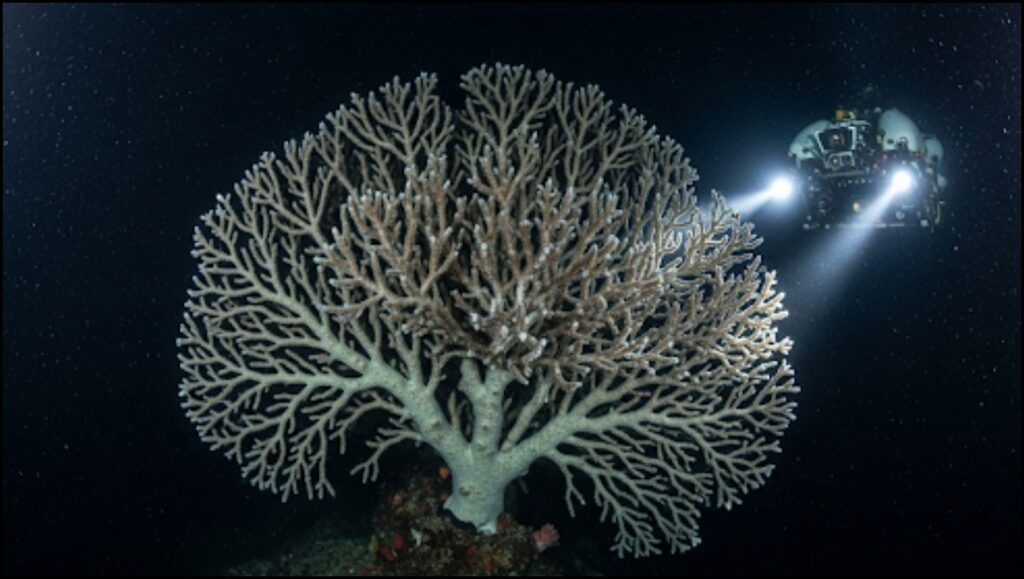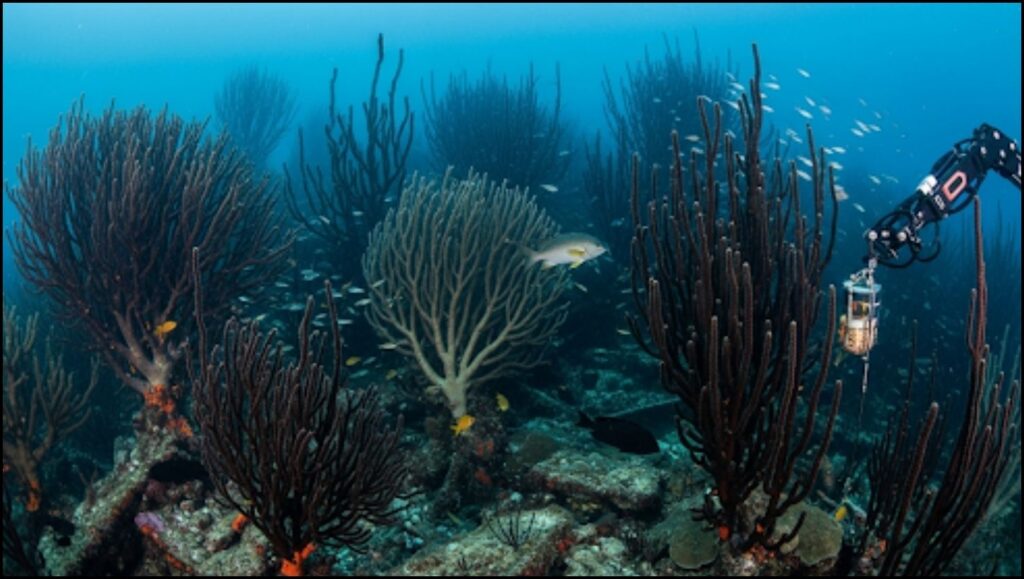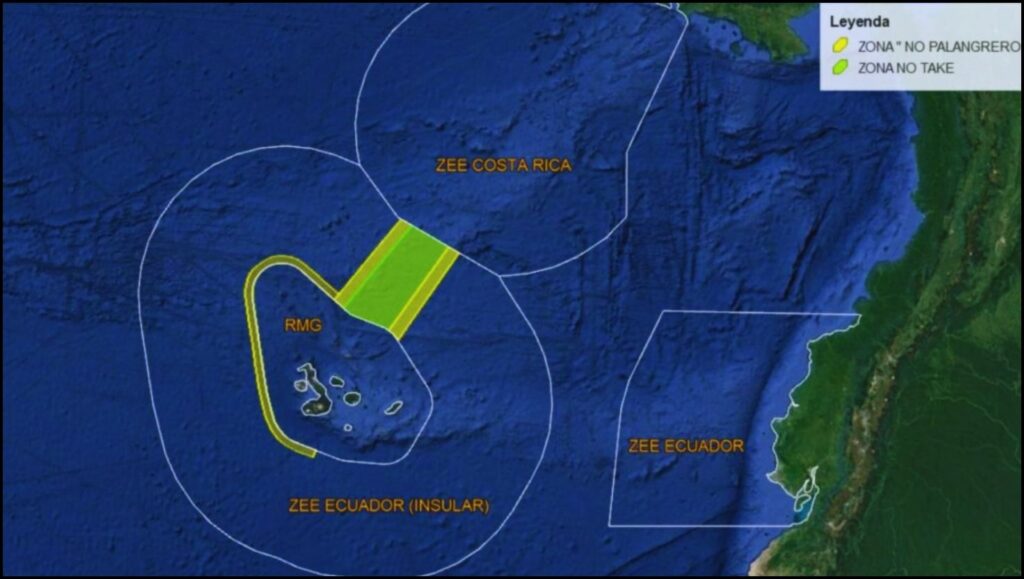An international team of scientists has rediscovered vast, thriving colonies of a giant black coral species not officially documented alive since the 19th century. The rediscovery of Antipathes grandis, a type of extinct black stony coral long thought to be lost, was made in the deep-sea ecosystems of the Galápagos Marine Reserve, challenging long-held assumptions about its survival and highlighting the unexplored frontiers of our oceans.

The findings, published in the peer-reviewed journal Scientific Reports, confirm the existence of a species that had vanished from scientific records for over 130 years. Using advanced Remotely Operated Vehicles (ROVs), researchers identified and surveyed these deep-sea coral forests, some with individuals stretching over ten meters in height.
“The rediscovery of this iconic, long-lost species is a profound moment for science and conservation,” said Dr. Salomé Buglass, a marine scientist at the Charles Darwin Foundation (CDF) and lead author of the study. “These flourishing coral forests show how little we know about the deep sea and the hidden wonders it holds.”
A Deep-Sea Mystery Solved by Technology
Antipathes grandis was first described in the late 19th century, with the last live specimen officially recorded by a scientific expedition off the coast of Panama in 1891. Subsequent expeditions failed to locate it, leading many to believe it had become a casualty of environmental changes or was, at the very least, locally extinct in the region.
The breakthrough came during expeditions aboard the E/V Nautilus, operated by the Ocean Exploration Trust (OET), and with support from the Schmidt Ocean Institute. Scientists deployed ROVs into the cold, dark waters of the Galápagos Marine Reserve, a protected area renowned for its unique biodiversity. At depths between 300 and 600 meters (approximately 1,000 to 2,000 feet), the robots’ cameras revealed not just single specimens but extensive, dense communities of the giant coral.
“Finding them was a complete surprise,” Dr. Buglass stated in a press release. “These discoveries fundamentally alter our understanding of this species’ distribution and abundance.”

The Significance of Antipathes grandis and Black Corals
Black corals, despite their name, are not always black. The living tissue of the coral is often brightly colored, but their underlying skeleton is made of a dark, proteinaceous material. They are foundational species, often called “ecosystem engineers,” because their complex, tree-like structures provide critical habitats for countless other marine organisms.
Antipathes grandis is particularly noteworthy for its immense size and longevity. Scientists believe these corals can live for hundreds, possibly thousands, of years, acting as living records of ocean conditions. Their branches serve as a vital sanctuary and nursery for fish and invertebrates in the otherwise sparse deep-sea environment, boosting local marine biodiversity.
“They are like ancient redwood trees of the deep ocean,” explained Dr. Euan Harvey, a marine ecologist from Curtin University not directly involved in this specific study but an expert on deep-sea habitats. “Their structure creates a three-dimensional world that supports a web of life. Losing them would be like clearing a forest on land.”
Implications for Ocean Conservation
This rediscovery underscores the critical importance of Marine Protected Areas (MPAs) like the Galápagos Marine Reserve. The designation of this area has likely been instrumental in shielding these ancient coral communities from destructive human activities such as bottom trawling, which can devastate deep-sea ecosystems.
The finding also serves as a powerful argument for increased investment in deep-sea exploration. According to the National Oceanic and Atmospheric Administration (NOAA), more than 80 percent of our planet’s ocean remains unexplored and unmapped. Discoveries like this one suggest that countless species and entire ecosystems may be waiting to be found, some of which may already be threatened by climate change, ocean acidification, and pollution. “This is a hopeful story, but it’s also a call to action,” Dr. Buglass emphasized. “We must continue to explore and protect these fragile, deep-sea environments before they are lost forever, potentially without us ever knowing they were there.”

The research team plans to continue analyzing the footage and data collected to better understand the health, size, and age of the Antipathes grandis population. Their work will provide a crucial baseline for monitoring these remarkable deep-sea habitats and advocating for their continued protection as part of a global ocean conservation strategy. As exploration technology advances, scientists hope to uncover more of the ocean’s secrets. For now, the reappearance of Antipathes grandis stands as a powerful symbol of resilience and the enduring mystery of the deep.
From Eyesore to Asset: 8 Decorative Fence Line Plumbing Ideas for Seamless Irrigation
